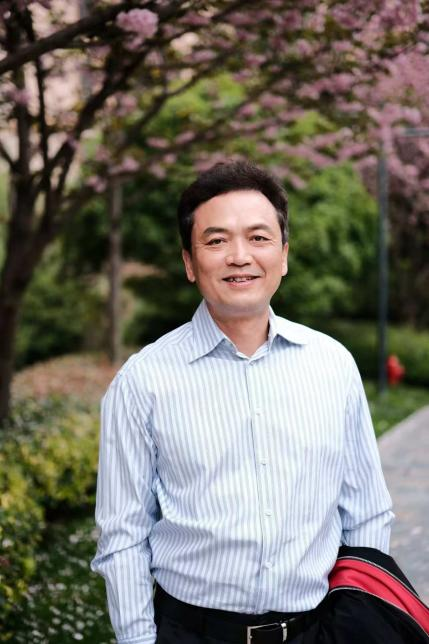Yinhua Fund's second quarter report is out! Haier Smart Home (600690.SH) and Yangtze Power (600900.SH) are newly listed as top ten heavy-weighted stocks, reducing holdings in high-end consumption.
2024-07-18 20:17
On July 18th, YinHua Fund released the second quarter report of its funds for the year 2024.
On July 18th, YinHua Fund released the second quarter report of its fund in 2024. The report of YinHua Wealth Theme Hybrid Fund managed by the renowned fund manager Jiao Wei showed that as of the end of the second quarter, the top ten heavy-weighted stocks of the fund were: CNOOC (600938.SH), Midea Group (000333.SZ), China Mobile (600941.SH), Haier Smart Home (600690.SH), China Shenhua (601088.SH), China Nuclear Power (601985.SH), SDIC Power (600886.SH), Shanxi Fenjiu (600809.SH), Yangtze Power (600900.SH), and Hisense Home Appliances (000921.SZ). Compared with the end of the first quarter, Haier Smart Home and Yangtze Power were newly added to the top ten heavy-weighted stocks, while Tsingtao Brewery (600600.SH) and Kweichow Moutai (600519.SH) exited the top ten heavy-weighted stocks.
Jiao Wei stated that the main operations in the second quarter and the first half of the year were focused on reducing holdings in high-end consumption and transitioning to dividend and overseas industries. Companies with a moat in high-end consumer industries, represented by high-end liquor, still have huge advantages in cash flow and user stickiness. However, it is necessary to observe and wait for these companies to reach a turning point in inventory and the maturation period to move towards dividend payouts to provide investment opportunities for investors.
Specifically, as of the end of the second quarter, the stock position of YinHua Wealth Theme Hybrid Fund was 83.78%, a decrease of 10.36 percentage points from the end of the first quarter.
In terms of increasing and decreasing positions, the top ten heavy-weighted stocks of YinHua Wealth Theme Hybrid Fund are: CNOOC, Midea Group, China Mobile, Haier Smart Home, China Shenhua, China Nuclear Power, SDIC Power, Shanxi Fenjiu, Yangtze Power, and Hisense Home Appliances. Compared with the end of the first quarter, Haier Smart Home and Yangtze Power were newly added to the top ten heavy-weighted stocks, while Tsingtao Brewery and Kweichow Moutai exited the top ten heavy-weighted stocks.
In fact, the change in Jiao Wei's holdings began in the first quarter of this year. Red dividend-related stocks such as CNOOC, China Mobile, China Nuclear Power, SDIC Power, and China Shenhua have appeared in the top ten heavy-weighted stocks at the end of the first quarter.
In terms of net value, as of the end of the second quarter, the net asset value per share of YinHua Wealth Theme Hybrid Fund A was 4.3550 yuan, with a net asset value growth rate of 1.93% in the second quarter; the net asset value per share of YinHua Wealth Theme Hybrid Fund C was 4.3291 yuan, with a net asset value growth rate of 1.78% in the second quarter; the benchmark performance rate was -1.35%.
Jiao Wei pointed out that the main operations of YinHua Wealth Theme Hybrid Fund in the second quarter and the first half of the year were focused on reducing holdings in high-end consumption and transitioning to dividend and overseas industries. The main ideas are as follows: for the consumption upgrade industry represented by high-end liquor, it has become a model of high ROE, high gross profit margin, and high moat over the past years. However, it is undeniably at the juncture of a new economic transformation, and these successful business models are facing external and internal challenges simultaneously. To some extent, the higher gross profit margin and pricing power in the past, the easier it is to be impacted and questioned under the new economic model.
In this context, the adjustment in valuation may precede profit itself. However, the idea that high-end liquor will enter a period of investment trash time is not agreed upon. Obviously, companies with a moat in high-end liquor consumption still have huge advantages in cash flow and user stickiness to refute this argument. It is necessary to wait and observe for these companies to reach a turning point in inventory and towards dividends in the mature period to provide investment opportunities for investors. It is believed that the unique three-tier terrain nurtures the rivers and lakes which are gifts and compensation from nature for the Chinese nation. These flowing streams can not only produce the characteristic liquor of Chinese culture but also be converted into electricity driven by water turbines. The monopoly of these natural resources will remain the focus of investment, increasing the allocation to overseas companies represented by home appliances.
Additionally, Jiao Wei stated that the allocation to dividend model companies has been increased, with these companies mainly concentrated in energy and utilities, characterized by low ROE but low PB and PE ratios. In terms of understanding, dividend investment is not solely based on the high or low dividend yield, but on the stability of its business model and the mature stage of capital consumption. If the decline in return on capital investment becomes the dominant factor in a certain stage, there may be a situation where resource consumption exceeds GDP growth and even corporate profits. In this scenario, the previously low PB energy and public utility companies may experience a systematic increase in valuation.
RECOMMEND

Advanced investment education | FATCA & CRS leading global tax transparency, who is most affected?
04/08/2025

34 年股市老兵“曾阿牛”:跑赢纳指 110%仍不满足!从第一代股评家到对冲基金管理人的经历
14/06/2025

The first closed door meeting of the New Intelligence Roundtable Faction and the US Dollar Foundation was successfully held in Shanghai
01/05/2025
Customer Service

Add the WeCom

